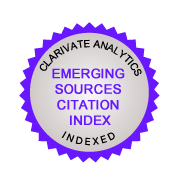Abstract
Following Aristotle, al-Farabi divides philosophy into theoretical and practical each of which requires some specific methodology both in interpretation and cognition. Based on this division, there may arguably be four methodologies for four parts: 1) cognition of theoretical philosophy 2) interpretation of practical philosophy 3) cognition of practical philosophy 4) interpretation of practical philosophy. This paper focuses on the last one: the methodology of interpreting practical philosophy. Al-Farabi has an undeniably significant contribution to practical philosophy as a commentator on Greek philosophy and as a founder. In this paper, I investigate how al-Farabi (870-950 AD) read classical practical philosophy to see how to read al-Farabi himself. Although a practical philosopher (e.g., Aristotle), in direct cognition, has his own sources, instruments, and methods of cognition (i.e., deduction, experience, and induction), however, the reader of him (e.g., al-Farabi) requires some adequate interpretative methods and elements, distinct from direct cognitive methodology, to read and interpret the acquired and expressed practical philosophy. Al-Farabi can provide us with a set of relevant methodological elements of an interpretative methodology for reading classical practical philosophy. This paper discusses and classifies the correlated methods and elements of this interpretative methodology into three interacting sections: 1) out-text elements 2) in-text elements 3) intertextual elements.
Recommended Citation
SHIRVANI, Meysam
(2023)
"How al-Farabi’s Interpretative Method can Engage with Aristotle’s Method in Cognition and Practical Philosophy,"
Comparative Philosophy: Vol. 14:
Iss.
1, Article 11.
Available at:
https://scholarworks.sjsu.edu/comparativephilosophy/vol14/iss1/11
Included in
Comparative Philosophy Commons, Epistemology Commons, History of Philosophy Commons, Islamic Studies Commons


